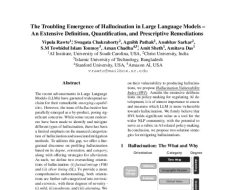
Tech predictions for 2024 include a shift in generative AI from large language models towards smaller and open source models. In addition, AI will support and teach coders new skills; iPhone users will not be in a rush to buy a new model; and the rise of satellite-powered services will impact more IoT devices and smartphone users. Here are more details about these big tech trends expected for 2024, according to predictions from analysts and experts.
Generative AI: Smaller, more focused and open source
Few people had heard of generative AI at the start of last year, but it is now inescapable.
Shift towards smaller, more cost-efficient generative AI models
While the current LLMs that power generative AI will continue to be popular, there is likely to be a shift towards smaller, more cost-efficient models. These models will be able to run on hardware with more limited processing capabilities, such as laptops or smartphones, according to consultancy Capgemini. That means generative AI will become a more accessible and versatile technology, allowing organizations to build their use cases faster, it said.
Robert Engels, head of the Capgemini generative AI lab, said that 2024 will see a shift towards smaller models, combined with knowledge graphs to improve their accuracy.
“You can actually build for specific tasks in an organization – small models that you can fine-tune for a lower cost and higher quality,” he said in an online presentation for journalists.
These smaller models might be domain-specific tools like co-pilots for coding or sector-specific tools such as AI models for medicine or engineering.
“We will have these multi-agent systems popping up. We will see that they are more specialised, more optimised, smarter, faster to train and more sustainable,” he said. These smaller models might be able to solve more complex tasks for a lower cost with higher precision. Open source models will come into play more with the emerging technology too, he said.
SEE: Forrester’s 2024 Tech Leadership Predictions About AI, HR, Budget and Manufacturing (TechRepublic)
Gen AI’s $10 billion revenue boost to enterprise software companies
Another consultancy, Deloitte, predicted that generative AI will give enterprise software companies a $10 billion revenue boost by the end of 2024 as they integrate AI into their offerings to give knowledge workers new tools to work with greater efficiency and make better decisions.
AI will teach coders new skills and support creativity
Workers are already using AI to augment their day-to-day jobs, such as by assisting with basic research, helping come up with ideas or even creating better reports. One of the first tech jobs AI has changed is software developer, and 2024 will see that continue.
AI will support and teach coders new skills, according to Werner Vogels, chief technology officer at Amazon. He predicted that AI will contribute to everything from code reviews to product strategy.
“The lines between product managers, front- and back-end engineers, DBAs, UI/UX designers, DevOps engineers, and architects will blur,” he stated in the predictions posted on his blog. But he said AI assistants will be able to support rather than replace human creativity. “Unburdened by the undifferentiated heavy lifting of tasks like upgrading Java versions, developers can focus on the creative work that drives innovation,” he wrote.
The average life of an iPhone will be eight years
Smartphones are now a long-standing and mature technology, and one consequence of that is in many cases older phones are almost as good as new ones. Since there is less of an incentive to upgrade our phones, we’re holding onto mobile devices longer, and we are more willing to buy pre-owned phones, too.
Analyst CCS Insight predicted that more than half of the 1.3 billion iPhones in use now are second-hand devices (in contrast, used Android smartphones represent less than 25% of Android’s installed base); and from 2024, the average life of an iPhone will be eight years. The analyst firm predicted Apple might take more direct control of the secondary market in Europe and the U.S., perhaps by introducing a grading system for pre-owned handsets.
Looking ahead: Sustainability and compensation
While we will hold onto our phones longer to save money, environmental concerns will also be a factor, including at the corporate level. The impact of the energy use of AI, cryptocurrency, the Internet of Things and more is starting to worry executives: Tech analyst Gartner predicts that, by 2027, 25% of CIOs will see their personal compensation linked to their sustainable technology impact.
More satellite constellations will impact IoT devices and smartphone users
Patrice Duboe, Capgemini’s chief innovation officer for Aerospace and Defence, said during an online presentation that private companies have been disrupting the space industry and focusing on operating in Low Earth Orbit, which is cheaper, to offer new opportunities for all manner of emerging technologies.
This will be a “special year for space,” Duboe said, because some of these new constellations will become operational after reaching a minimum number of satellites in orbit. This will lead to an increase in the number of Internet of Things devices that are using satellite bandwidth to connect, far from the metropolitan centres where much of the traditional bandwidth is found.
SEE: Is Australia’s Deep Tech Future in Space? (TechRepublic)
Smartphones users will see benefits from the growth in satellite constellations, too. Basic emergency and texting services have already started to operate; but as 200 million smartphones capable of connecting with satellite services are expected to be sold in 2024, expect a wave of services to come as major players — like Apple, Qualcomm, MediaTek and Samsung — work with satellite providers.
GP Bullhound noted that the number of satellites orbiting Earth is going to increase from 8,000 to more than 100,000 in the next 10 years.




